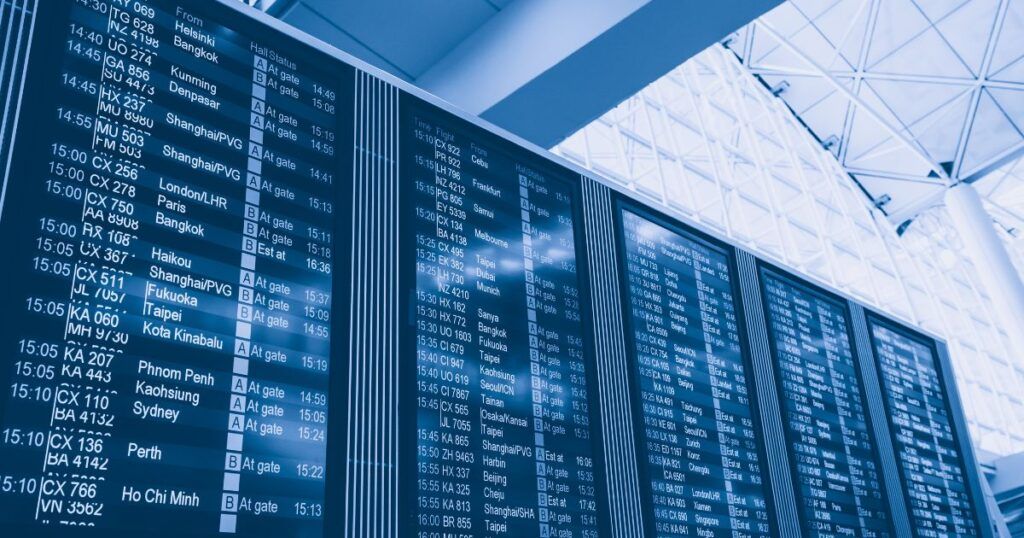
Artificial intelligence (AI) is rapidly transforming all industries. Aviation is no different, except that it has been an early adopter.
AI planning and scheduling is one of the most promising applications. AI can automate tasks, optimize schedules, and improve efficiency in various ways.
A Birds-eye View of AI in Flight
Current Uses of AI in Aircraft Planning and Scheduling
Planning and scheduling is an incredibly common application of AI. There are few industries as defined by plans and schedules as the commercial flight industry. Here are a few of the things they rely on AI for:
1️⃣ Fleet Planning
Optimizing the size and composition of aircraft fleets is critical for airlines to reduce costs and improve efficiency.
2️⃣ Route Planning
Planning the most efficient routes for aircraft to fly reduces both fuel consumption and emissions.
3️⃣ Flight Scheduling
Flight schedules can be crafted to minimize delays and cancellations. Careful planning also considers staging planes for flights on subsequent days, evening overall fleet wear, and improving the customer experience.
4️⃣ Maintenance Scheduling
Knowing when an aircraft’s parts will soon need service allows us to minimize unexpected downtime, improving the customer experience. It also improves safety and reliability while reducing the fleet’s overall cost.
5️⃣ Crew Scheduling
AI schedules flight crews to minimize fatigue the risk of crews ‘timing out’, and downtime during a shift. This can help to improve safety and productivity.
6️⃣ Planning
AI planning and scheduling improve efficiency in several ways. Scheduling engine maintenance tasks in a large job shop reduces downtime. It can schedule crew without human intervention, saving manhours and reducing the likelihood of a crew timing out on their last leg. AI can even help in seating passengers efficiently.
7️⃣ Cost Savings
AI can help reduce aircraft planning and scheduling costs. For example, AI can optimize fleet size and composition, leading to savings on fuel and maintenance costs.
8️⃣ Safety
Better planning can improve safety, for example, by reducing crew fatigue. AI can identify potential problems with flight schedules or maintenance plans. Once identified, these issues can be corrected with an eye toward safety.
9️⃣ Customer Service
AI can minimize delays and cancellations. This improves the customer experience.

Aircraft Planning and Scheduling AI Challenges
The challenges of using AI for aircraft planning and scheduling:
⚠️ Data Availability
AI models need large amounts of data to be effective. This can be a challenge in the aircraft industry, where data is often siloed and inaccessible.
⚠️ Complexity
AI models can be complex and difficult to understand and manage. This challenge extends to making sure they’re accurate and reliable.
⚠️ Bias
AI models can be biased, leading to unfair decisions. This is a particular concern in the aircraft industry, where safety is paramount.
The Future of AI in Aircraft Planning and Scheduling
The future of AI in aircraft planning and scheduling is bright. We can expect to see even more ways to use AI to improve efficiency, safety, and customer satisfaction.
For example, we should expect to see our predictive capabilities improve. This is also true for weather, engine health, and consumer demand. Improvement in predictions would lead to improved planning capabilities. If our predictions are better, we need less margin in our plans. Needing less margin for error in plans leads to more efficient use of resources.
Unlike humans, these systems can continuously observe real-time data. Continuous monitoring and planning let airlines react to changing circumstances. Without continuous monitoring, airlines would lack insight into changing situations, and without automated planning, it would be too expensive to react to changes.

Maintenance Planning and Predictive Maintenance
AI can predict maintenance needs from components instrumented with sensors. AI can identify early signs of faults, often before humans can. By identifying faults early, we can perform maintenance when it is cheaper. Identifying faults earlier also lets us schedule maintenance for when it is convenient. It lets us stage replacement parts and craft ahead of time to avoid unscheduled downtime.
Predicting required maintenance also helps in scheduling. We can pick the most convenient times to service the craft. Or, we can schedule maintenance to reduce disruption or operational cost. Finally, early intervention extends the useful life of components.
Crew Scheduling and Resource Allocation
AI can optimize crew schedules based on many factors, including:
- demand
- crew qualifications
- labor regulations
- rest requirements
- time zone changes
- shift rotations
- staging requirements
- Potential weather disruptions
Human planners must develop ‘rules of thumb’ and best practices to cope with the size of the planning problem. AI doesn’t tire or get bored, so it can, comically, ‘think outside the box’ by considering plans humans wouldn’t. The trick is in capturing mathematically what makes a schedule high quality. Eliciting scheduling constraints scoring rules is the hard part. Once you have the rules, planners and schedulers are relatively simple pieces of software.
These AI-driven optimizations in planning and scheduling increase the efficiency of airline operations. Aviation companies adopting AI should see better resource usage and customer satisfaction.
Unlock the Power of AI Engineering
From optimizing manufacturing materials to analyzing and predicting equipment maintenance schedules, see how we’re applying custom AI software solutions.